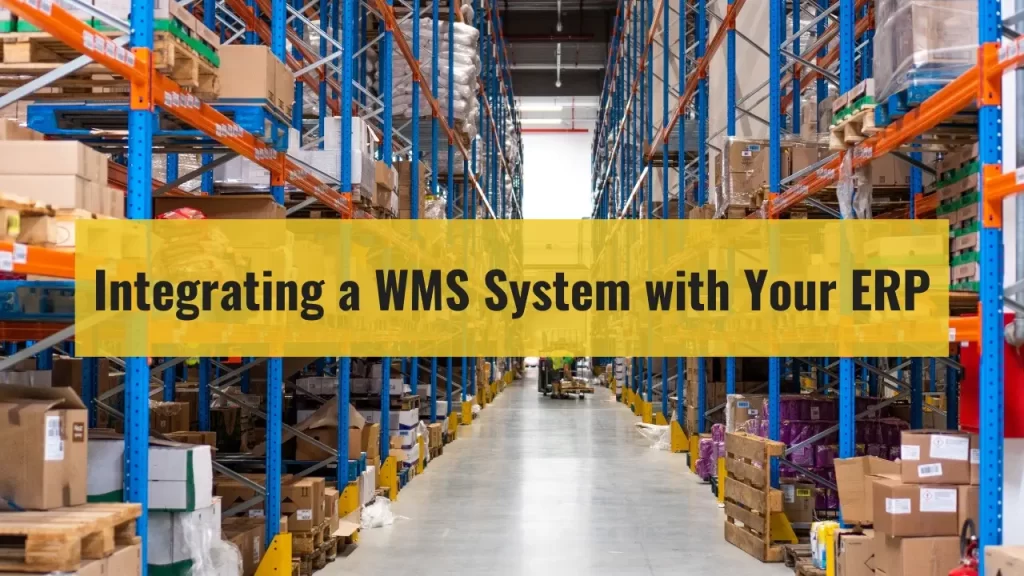In the dynamic realm of modern business operations, the integration of a WMS System (Warehouse Management System) with an ERP (Enterprise Resource Planning) software is a strategic move that can revolutionize the efficiency of your supply chain. The seamless collaboration between these two systems enhances visibility, optimizes processes, and contributes to overall business success. This article explores the key factors to consider when integrating a WMS System with your ERP, shedding light on the critical aspects that can make or break the success of this integration.
1. Compatibility and Interoperability
The foundation of a successful integration lies in the compatibility and interoperability of the chosen WMS System and ERP. Before embarking on the integration journey, thoroughly assess whether the two systems can seamlessly communicate and share data.
Opt for a WMS System that offers pre-built connectors or APIs specifically designed for your ERP software. This ensures a smoother integration process and minimizes the risk of data discrepancies or communication gaps.
2. Data Accuracy and Consistency
One of the primary goals of integrating a WMS System with your ERP is to achieve accurate and consistent data flow between the warehouse and the broader enterprise. Data discrepancies can lead to inventory inaccuracies, order fulfillment errors, and operational inefficiencies.
Ensure that the integration solution includes robust mechanisms for data validation, synchronization, and error handling. Regularly monitor data integrity to maintain a reliable and up-to-date representation of your business operations.
3. Real-Time Communication
In the fast-paced world of supply chain management, real-time communication between your WMS System and ERP is crucial. Choose an integration solution that facilitates instantaneous data exchange to provide timely insights into warehouse activities, inventory levels, and order statuses.
Real-time communication not only enhances decision-making but also enables proactive problem-solving, contributing to a more agile and responsive supply chain.
4. Scalability for Future Growth
As your business expands, so should your integrated system. Scalability is a key factor to consider when selecting a WMS System and integration solution. Ensure that the chosen system can accommodate the growing complexities of your warehouse operations and seamlessly scale alongside the evolving needs of your enterprise.
This future-proof approach minimizes the need for frequent system upgrades or replacements, saving both time and resources in the long run.
5. User Training and Adoption
The success of any technology integration depends on the acceptance and proficiency of the end-users. Prioritize an integration solution that offers user-friendly interfaces and provides comprehensive training programs for your team.
A well-trained workforce is more likely to embrace the integrated WMS System and ERP, maximizing the benefits of the collaboration. Consider conducting user feedback sessions to address any usability concerns and ensure a smooth transition.
6. Customization and Flexibility
Every business has unique processes and requirements. Opt for an integration solution that allows for customization to align with the specific needs of your warehouse and enterprise. The ability to tailor the integration to your business workflows ensures a more seamless fit and maximizes the effectiveness of the WMS System and ERP collaboration.
A flexible integration solution accommodates changes in business processes and supports the incorporation of new technologies or functionalities.
7. Cost-Effective Implementation
While the benefits of integrating a WMS System with your ERP are substantial, it’s essential to manage implementation costs effectively. Conduct a thorough cost-benefit analysis to evaluate the return on investment (ROI) of the integration project.
Consider both upfront costs and ongoing maintenance expenses. Look for an integration solution that aligns with your budget constraints while delivering long-term value in terms of improved operational efficiency and reduced costs.
8. Security and Compliance
The integration of a WMS System with an ERP involves the exchange of sensitive business data. Security and compliance should be non-negotiable aspects of the integration solution. Ensure that the chosen integration platform adheres to industry standards and incorporates robust security measures such as data encryption, access controls, and audit trails.
Compliance with regulations, such as GDPR, underscores the commitment of the integration solution provider to data protection and ethical business practices.
9. Performance Monitoring and Optimization
Continuous monitoring of the integrated system’s performance is essential for identifying bottlenecks, optimizing workflows, and ensuring the overall health of your supply chain. Choose an integration solution that includes monitoring tools and analytics capabilities.
Regularly assess key performance indicators (KPIs) related to warehouse efficiency, order fulfillment, and data accuracy. This proactive approach allows you to address issues promptly and fine-tune the integrated system for optimal results.
10. Vendor Support and Maintenance
Selecting reliable vendors for both your WMS System and ERP is crucial for ongoing support and maintenance. Confirm that the vendors provide comprehensive support services, including updates, patches, and troubleshooting assistance.
Establish clear communication channels with the vendors to address any issues promptly. A strong partnership with your solution providers ensures that your integrated system remains resilient, secure, and aligned with the evolving needs of your business.
Conclusion
The integration of a WMS System with your ERP is a strategic move that can elevate your supply chain management to new heights of efficiency and effectiveness. By considering factors such as compatibility, data accuracy, real-time communication, and scalability, you can ensure a seamless integration process and maximize the benefits of this collaboration. Prioritize user training, customization, and cost-effective implementation to create a harmonious relationship between your WMS System and ERP, setting the stage for a more agile, responsive, and successful business operation.
